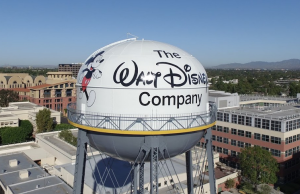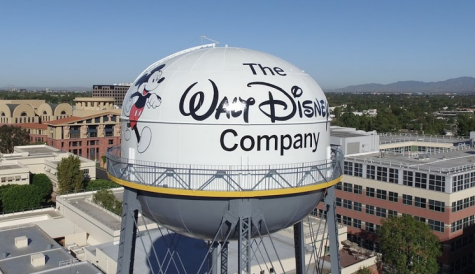Disney’s formula for streaming success

Source: Disney
Disney boss Bob Iger packed so much into this week’s quarterly earnings call that attending analysts were somewhat at a loss deciding what to focus their questions on.
The headline items were the (pre-announced) creation of a joint venture US sports streamer with Warner Bros. Discovery and Fox, an update on the impending launch of a standalone ESPN streamer, the announcement of a US$1.5 billion investment in Epic Games, the narrowing of streaming losses to US$300 million (in the face of the small matter of the loss of 1.3 million Disney+ subscribers) and details of a planned crackdown on password sharing.
And to please investors there was also the announcement of an additional dividend and a US$3 billion stock buyback programme.
Sports draw
First, the sports streamer. Top-flight sports rights are a very expensive investment, and making a profit from live sports streaming is perhaps even more challenging than making a profit from scripted entertainment – hence Netflix’s reluctance to get involved (despite its recent, tangential toe-dipping exercises).
On the other hand, live sports is a big draw for new subscribers – perhaps the biggest. That is why all the majors (other than Netflix) are looking to sports to boost take up.
So to square the circle, why not bundle sports streamers together à la cable TV? The new sports streamer will likely be offered as an app but it will also be bundled with Disney+, Disney’s other streamer Hulu and Warner Bros. Discovery’s Max. The sports content it aggregates will be non-exclusive, so the platform will not be in the business of acquiring rights on its own.
Iger said that the service would help to capture “fans moving away from the full cable and satellite bundle”, including those who never sign up to cable or satellite in the first place. So this is an intiative that copes cable and undermines it at the same time.
The standalone ESPN streamer, building on ESPN+, will also target this market, and at the same time will be offered in a bundle with Hulu and Disney+.
With these separate initiatives Disney is hedging its bet with sports. Iger made the point on the earnings call that “we’re going to get paid in this new joint venture for our channels at a level that’s commensurate with the level that we get paid for those channels in the multi-channel ecosystem”, meaning that if the sports streamer helps drive cord-cutting, Disney won’t lose out, with gains here offsetting reduced revenue from multichannel fees. Plus, it maybe has the benefit of additionally pulling in cord-nevers who like sports.
Epic investment
Disney’s investment in Epic Games is seen by Iger as another venture that does not carry “too much risk”. Gaming is now seen as a key competitor to other forms of ‘audiovisual entertainment’ of the type that Disney and other streamers specializes in. Iger said the revelation that Gen Z and Gen Alpha consumers were spending just as much time on games as on TV and movies, leading to the thought that “we had to be there”.
Given that Disney’s core competency is in TV and movies rather than games, investing in someone else who does it better seems like a smart move. Iger said that of all Disney’s efforts to enter the gaming world, “the one that ended up being most successful for us was licensing”.
The idea now is for Disney to build on an existing relationship with Epic’s Fortnite to create a “gigantic Disney World à la Fortnite” that could “live next to Fortnite and be completely interconnected with it”. (As a dedicated non-gamer, I’ll take the workability of this on trust. In any case, jumping on the successful bandwagon that is Fortnite as a route into gaming, with what for Disney is, in Iger’s words, “a small equity stake” seems like a reasonable move.)
Streaming profitability
Disney meanwhile continues to work away at burrowing towards streaming profitability with Disney+. The strategy here is multifaceted.
Disney’s cost-cutting and axing of shows, mirroring what’s happened elsewhere in the industry, has been well documented. But the company is now looking to grow revenue through a mix of price hikes, bundling to grow subs, advertising and a crackdown on account sharing.
Bundling will play a key role in this. On the earnings call, Iger talked about the “incredible response to the beta launch of Hulu on Disney+”, with a full launch to follow next month. Add standalone ESPN to that, and the bundle is complete, with the separate sports streamer JV an additional way to build a return on the investment in rights.
Disney has also launched advertising on Disney+, and is following Netflix’s playbook (which has translated into subscriber growth success) by launching a crackdown on password sharing, with its very own paid sharing initiative to debut in the summer.
On the earnings call, CFO Hugh Johnston gave an account of how “Disney+ accounts suspected of improper sharing will be presented with new capabilities to allow their borrowers to start their own subscriptions”.
The impact of this initiative should help build momentum from an expected growth in subscribers in the second (current) fiscal quarter from a US deal with Charter Communications. (“I do think that this kind of arrangement is one that we’ll likely see with other multi-channel distributors,” said Iger on the call.)
Johnston said he was confident that the streaming business would become profitable in Q4 of fiscal 2024 and ultimately to deliver double-digit operating margins from it.
All of this marks a provisional return to form for Disney (and for Iger) after a difficult period last year. As it attempts to fend off the unwelcome attempts by activist investor Nelson Peltz to secure seats on the board, the results, and new initiatives (helped along perhaps by that dividend and the buyback programme) give the current management team ammunition in their battle to convince shareholders to back them. Time will tell whether they are enough, as Peltz has demanded, to “restore the magic”.



